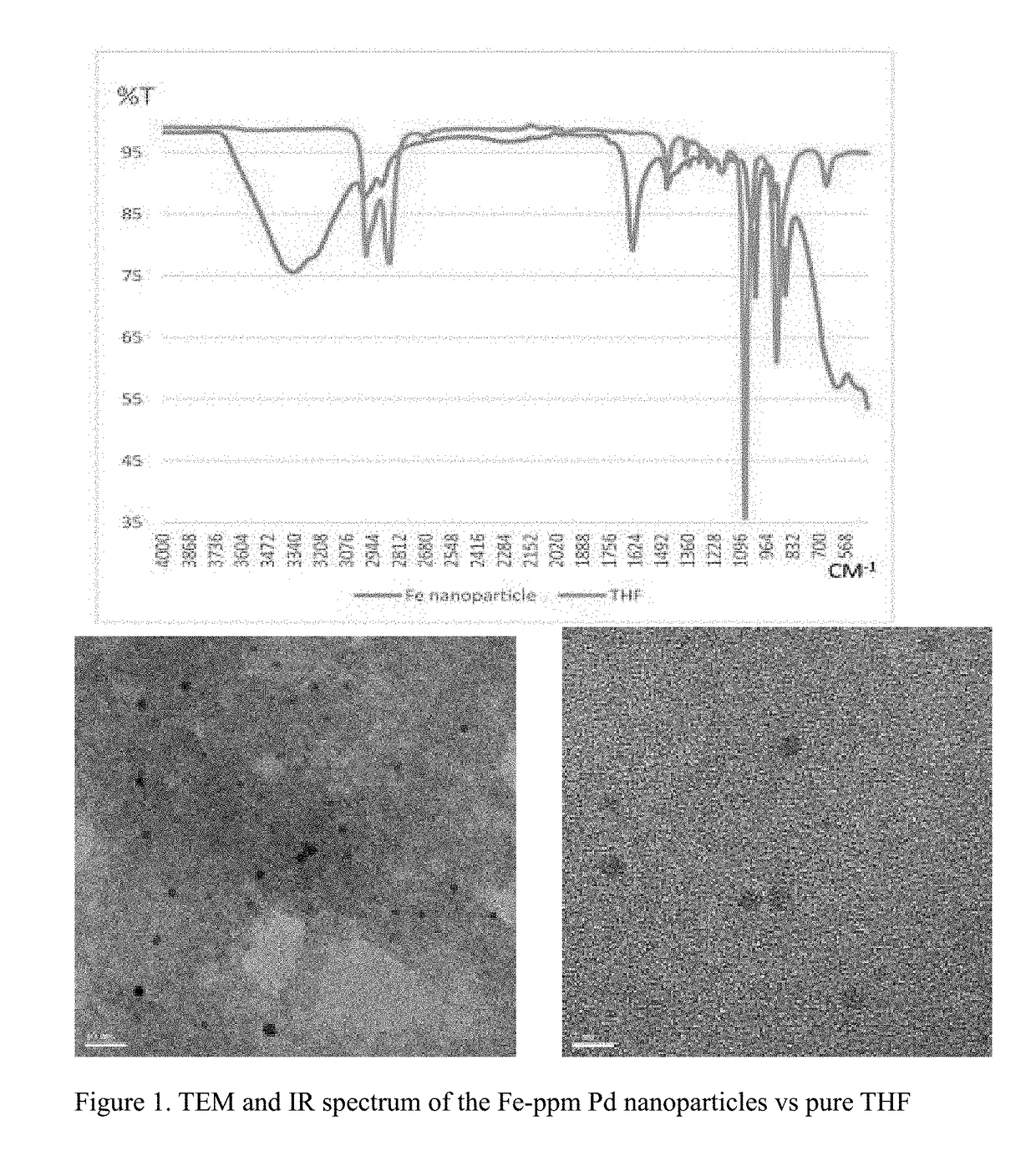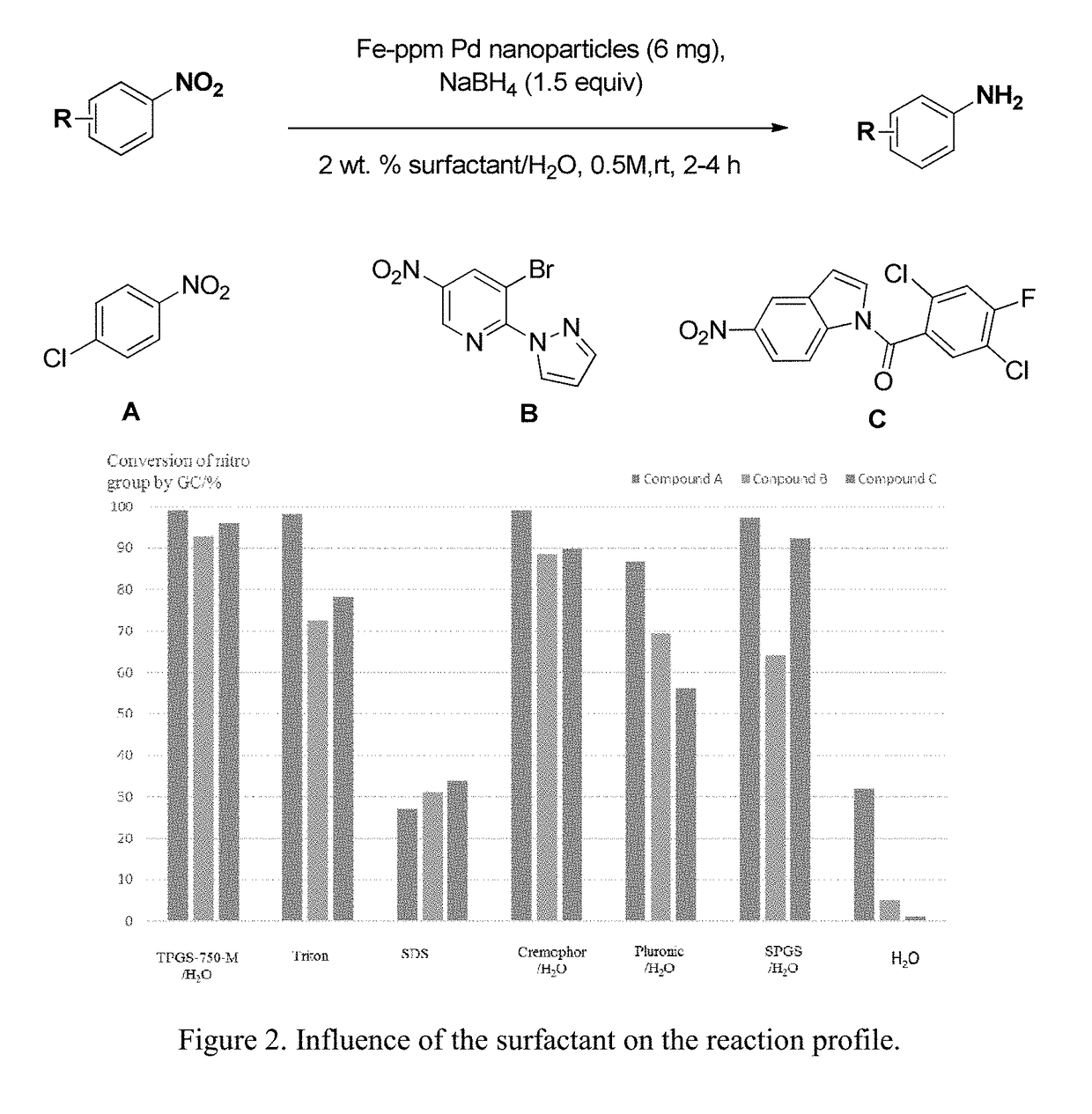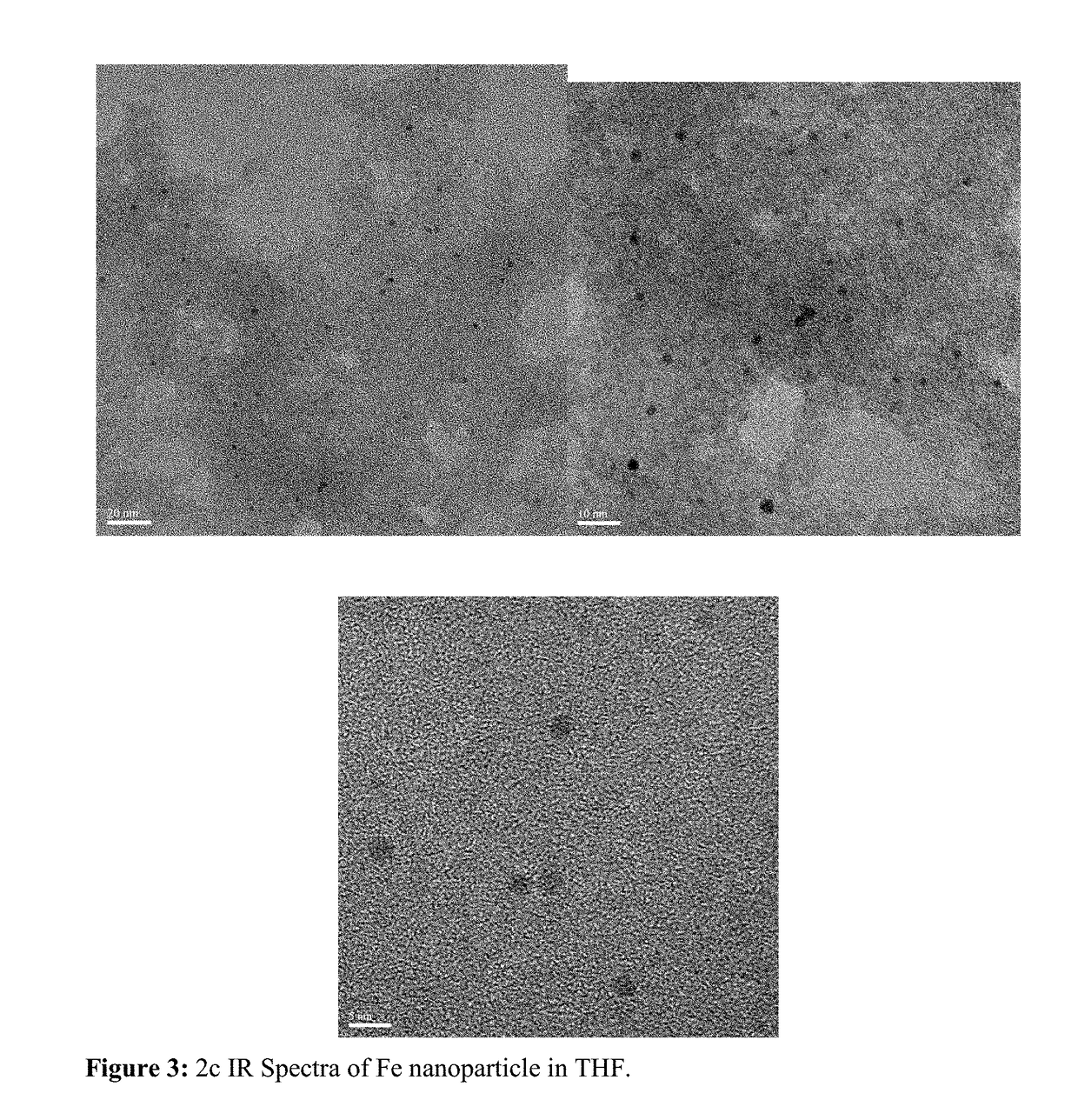Fe-ppm Pd, Cu and/or Ni Nanoparticle-Catalyzed Reactions in Water
a nanoparticle and catalyst technology, applied in the field of fe-ppm pd, cu and/or ni nanoparticlecatalyzed reactions in water, can solve the problems of limited substrate scope, sensitive molecules, and limiting potential applications of otherwise highly functionalized molecules, etc., to achieve low catalyst loading, tolerate a large variety of functional groups, and high chemoselectivity
- Summary
- Abstract
- Description
- Claims
- Application Information
AI Technical Summary
Benefits of technology
Problems solved by technology
Method used
Image
Examples
Embodiment Construction
Definitions
[0054]Unless specifically noted otherwise herein, the definitions of the terms used are standard definitions used in the art of organic synthesis and pharmaceutical sciences. Exemplary embodiments, aspects and variations are illustratived in the figures and drawings, and it is intended that the embodiments, aspects and variations, and the figures and drawings disclosed herein are to be considered illustrative and not limiting.
[0055]An “alkyl” group is a straight, branched, saturated or unsaturated, aliphatic group having a chain of carbon atoms, optionally with oxygen, nitrogen or sulfur atoms inserted between the carbon atoms in the chain or as indicated. A (C1-C20)alkyl, for example, includes alkyl groups that have a chain of between 1 and 20 carbon atoms, and include, for example, the groups methyl, ethyl, propyl, isopropyl, vinyl, allyl, 1-propenyl, isopropenyl, ethynyl, 1-propynyl, 2-propynyl, 1,3-butadienyl, penta-1,3-dienyl, penta-1,4-dienyl, hexa-1,3-dienyl, hexa-...
PUM
| Property | Measurement | Unit |
|---|---|---|
| pH | aaaaa | aaaaa |
| size | aaaaa | aaaaa |
| size | aaaaa | aaaaa |
Abstract
Description
Claims
Application Information
 Login to View More
Login to View More - R&D
- Intellectual Property
- Life Sciences
- Materials
- Tech Scout
- Unparalleled Data Quality
- Higher Quality Content
- 60% Fewer Hallucinations
Browse by: Latest US Patents, China's latest patents, Technical Efficacy Thesaurus, Application Domain, Technology Topic, Popular Technical Reports.
© 2025 PatSnap. All rights reserved.Legal|Privacy policy|Modern Slavery Act Transparency Statement|Sitemap|About US| Contact US: help@patsnap.com



